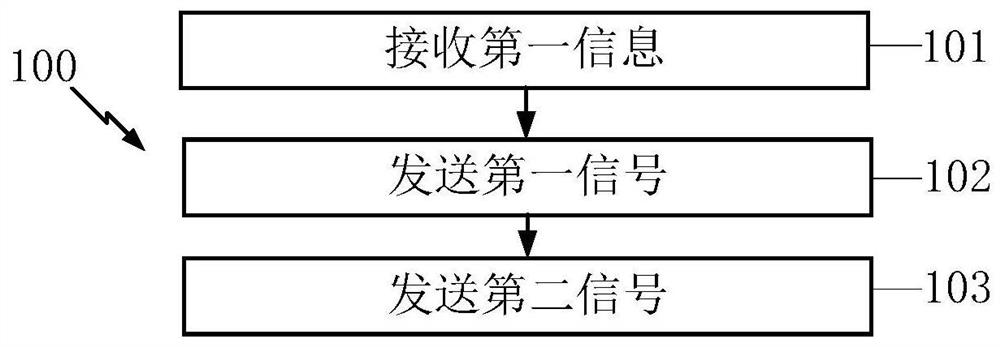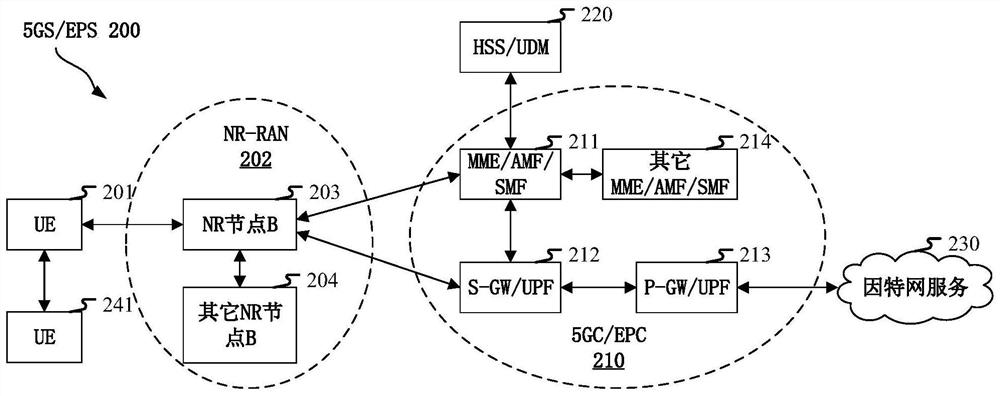Method and apparatus in node for wireless communication
A technology of wireless communication and node equipment, applied in wireless communication, synchronization devices, digital transmission systems, etc., can solve the problems that existing designs cannot work and cannot work effectively, and achieve the effect of improving configuration flexibility
- Summary
- Abstract
- Description
- Claims
- Application Information
AI Technical Summary
Problems solved by technology
Method used
Image
Examples
Embodiment 1
[0094] Embodiment 1 illustrates the first information, the flowchart of the first signal and the second signal according to an embodiment of the present application, as shown in the attached figure 1 shown. in the attached figure 1 In the figure, each block represents a step, and it should be emphasized that the order of the blocks in the figure does not represent the chronological relationship between the steps represented.
[0095] In Embodiment 1, the first node device in this application receives the first information in step 101; sends the first signal in step 102; sends the second signal in step 103; wherein, the first information is used To determine X alternative formats, the X is a positive integer greater than 1; the first signal adopts the first format; the second signal adopts the second format; the first format is the X alternative One of the alternative formats in the format, the second format is an alternative format among the X alternative formats, the first ...
Embodiment 2
[0301] Embodiment 2 illustrates a schematic diagram of a network architecture according to the present application, as attached figure 2 shown. attached figure 2 A diagram illustrating a network architecture 200 of 5G NR, LTE (Long-Term Evolution, long-term evolution) and LTE-A (Long-Term Evolution Advanced, enhanced long-term evolution) systems. The 5G NR or LTE network architecture 200 may be referred to as 5GS (5G System) / EPS (Evolved Packet System, Evolved Packet System) 200 or some other suitable terminology. 5GS / EPS 200 may include one or more UE (User Equipment, user equipment) 201, NG-RAN (next generation radio access network) 202, 5GC (5G Core Network, 5G core network) / EPC (Evolved Packet Core, Evolved Packet Core) 210, HSS (Home Subscriber Server, Home Subscriber Server) / UDM (Unified Data Management, Unified Data Management) 220 and Internet service 230. 5GS / EPS can be interconnected with other access networks, but for simplicity Show these entities / interfaces. ...
Embodiment 3
[0311] Embodiment 3 shows a schematic diagram of an embodiment of a wireless protocol architecture of a user plane and a control plane according to the present application, as shown in the attached image 3 shown. image 3 is a schematic diagram illustrating an embodiment of a radio protocol architecture for a user plane 350 and a control plane 300, image 3The radio of the control plane 300 for the first node device (UE, gNB or terminal device in NTN network) and the second node device (gNB, UE or satellite device or aircraft platform device in NTN network) is shown in three layers Protocol Architecture: Layer 1, Layer 2 and Layer 3. Layer 1 (L1 layer) is the lowest layer and implements various PHY (Physical Layer) signal processing functions. The L1 layer will be referred to herein as PHY 301 . Layer 2 (L2 layer) 305 is above the PHY 301 and is responsible for the link between the first node device and the second node device through the PHY 301 . The L2 layer 305 include...
PUM
 Login to View More
Login to View More Abstract
Description
Claims
Application Information
 Login to View More
Login to View More - R&D
- Intellectual Property
- Life Sciences
- Materials
- Tech Scout
- Unparalleled Data Quality
- Higher Quality Content
- 60% Fewer Hallucinations
Browse by: Latest US Patents, China's latest patents, Technical Efficacy Thesaurus, Application Domain, Technology Topic, Popular Technical Reports.
© 2025 PatSnap. All rights reserved.Legal|Privacy policy|Modern Slavery Act Transparency Statement|Sitemap|About US| Contact US: help@patsnap.com



